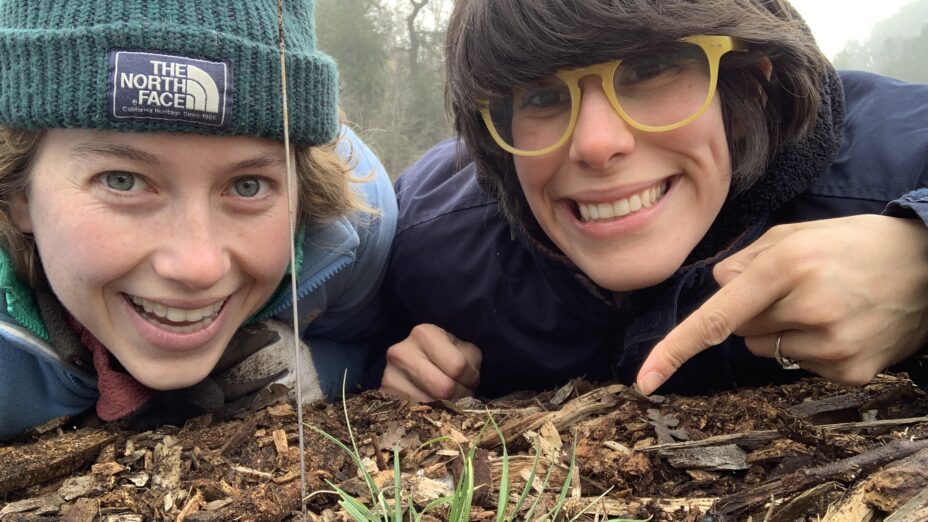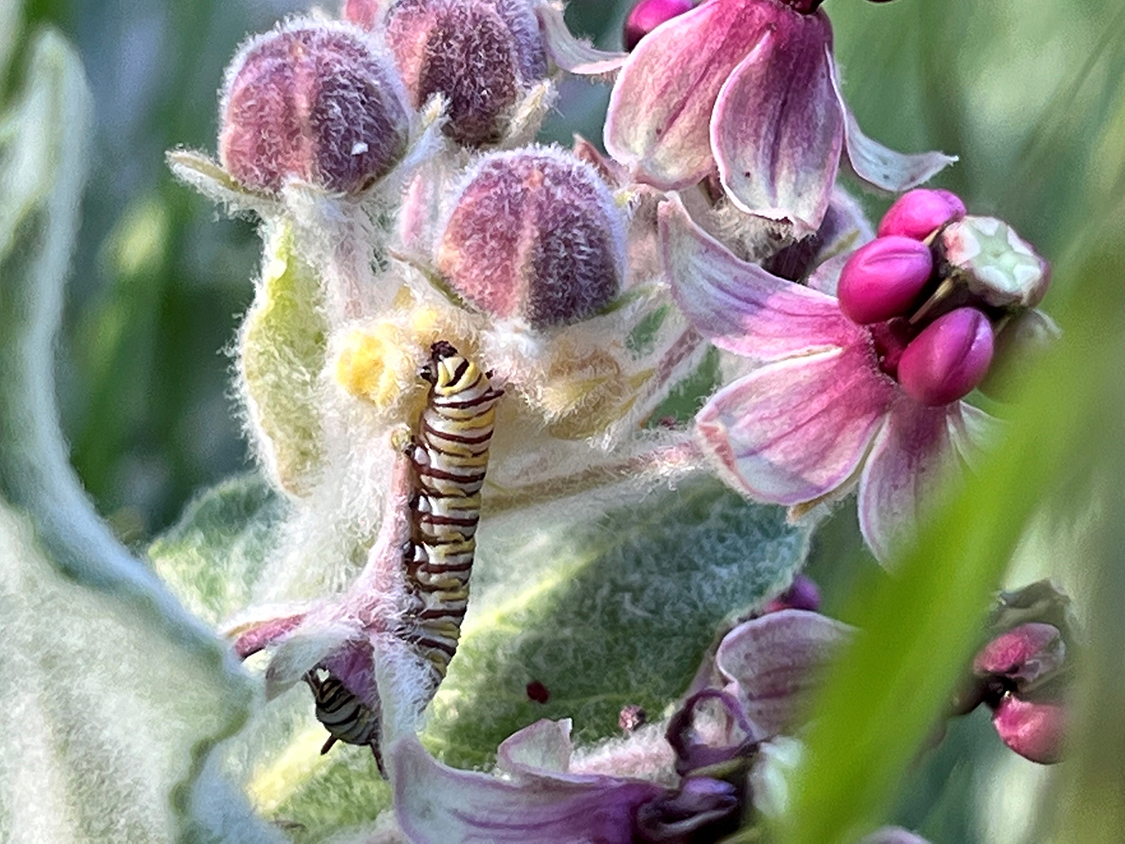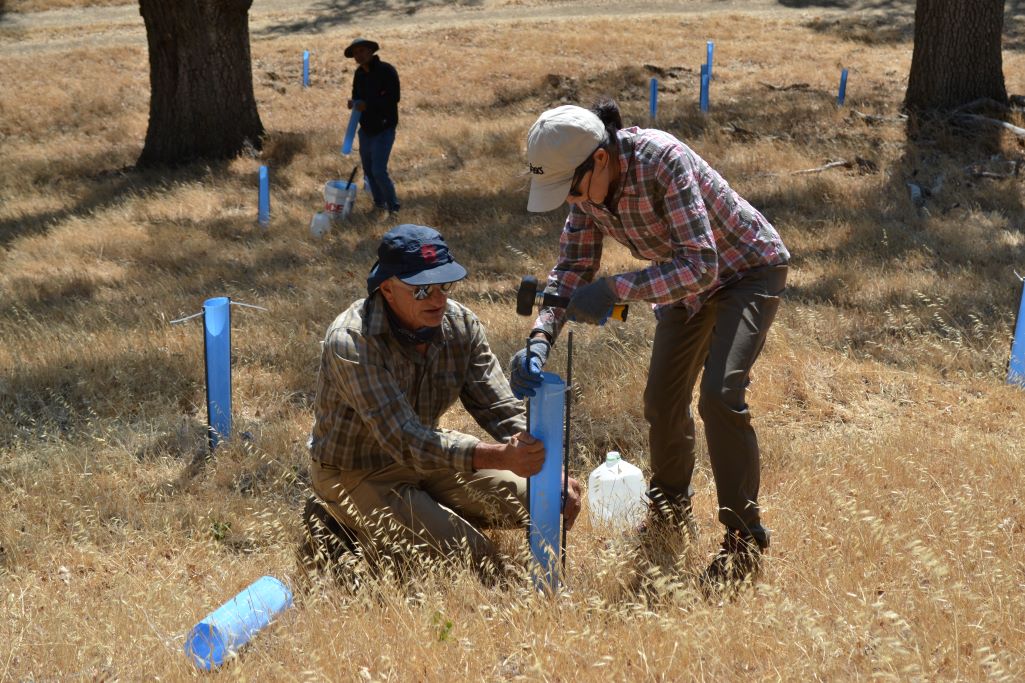
“The true meaning of life is to plant trees, under whose shade you do not expect to sit.”
—Nelson Henderson
We recently planted our 2,000th plant for our 10,000 Trees and Plants project! On December 22, we planted purple needlegrass (Stipa pulchra) at Marsh Creek 4, officially bringing the total to 2,000 plants.
Purple needlegrass is California’s state grass. It is drought and heat tolerant, can grow in poor soil with deep roots, and burns slowly. It also helps suppress invasive plant species and also supports native oaks.
Our 10,000 Trees and Plants Project
As part of our Climate Action Plan, Save Mount Diablo committed to planting and protecting 10,000 trees and plants in 10 years. We started our 10,000 Trees and Plants project in summer 2021.
We’ve been able to make such good progress thanks to the hard work of our committed volunteer DiRT team. Thank you to everyone who has been working hard to plant, protect, and care for these plants!
Since planting these trees and plants, our stewardship volunteers have been watering them regularly, removing invasive weeds around them, and installing tree cages around native tree seedlings.
The cages protect the native plant seedlings from being eaten by small mammals.
We’re working to ensure that these plants grow and provide habitat to native animals for generations to come.

Purple needlegrass, our 2,000th plant. Photo by Haley Sutton.
Habitat for Native Species
This year, we’ve especially been making an effort to plant California milkweed plants throughout our properties. In 2022, the migratory monarch butterfly was officially declared endangered, a strong testament to how much the population has declined in recent years.
Throughout the next few months, Save Mount Diablo will be planting hundreds of milkweed plants throughout various properties in the Diablo foothills. These plants were grown at the Watershed Nursery after we collected the seeds last summer.
California milkweed is one of many plants that we’re planting on these lands. A variety of native plants is important for sustaining a variety of native animals. Our goal is to ensure that these areas remain as thriving ecosystems in perpetuity.

Monarch caterpillar on California milkweed. Photo by Sean Burke
Strengthening Community through Restoration
Two thousand is no small number, and the only way we’ve been able to accomplish this much is with the support of our community.
Between our Diablo Restoration Team; our watering crews; and school, camp, and corporate groups, we had around 200 volunteers join us across 30 workdays in 2022.

Volunteers planting trees. Photo by Haley Sutton
What Else Have We Been Planting?
Recently, our team has been planting at Mangini Ranch, Marsh Creek 4, and Curry Canyon Ranch.
In the fall, our DiRT volunteers particularly focused on Mangini Ranch Educational Preserve—they’ve been planting a huge variety of native plants near the trailheads.
Visitors will immediately be able to see these assorted species as they start their journeys through the preserve.
Among the most planted species at our recent workdays are California aster, yarrow, and purple needlegrass. But visitors who look closely can also find plants like white sage and soap plant.

DiRT volunteer native restoration project at Marsh Creek 7. Photo by Haley Sutton
Addressing the Climate Crisis
Planting native trees and plants can be a powerful technique to help address the climate crisis.
Native grasses have roots that go deep into the ground, sequestering much more carbon that one would think looking at them from above.
Even if the grasses are burned away by fire, their root systems remain, keeping the carbon underground sequestered and preventing potentially catastrophic erosion.
Help us plant and protect more trees and plants by volunteering at our DiRT days in 2023 and beyond!
Top photo by Haley Sutton

